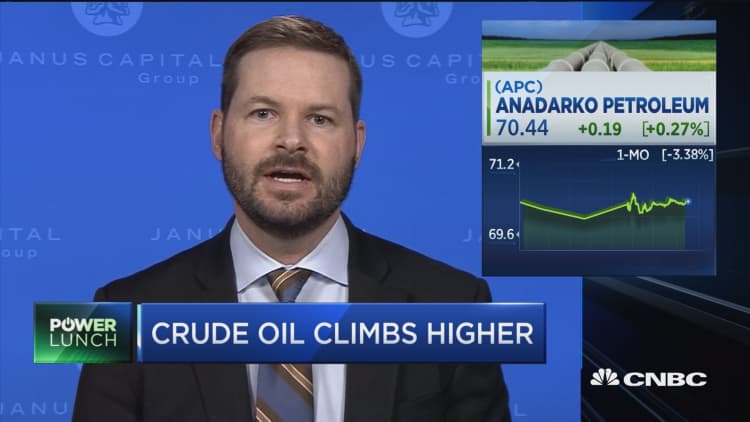
Dealmaking in the upstream U.S. oil and gas sector rebounded strongly in 2016, as buyers scooped up prime acreage that can produce at a profit while crude prices are low, according to a new report.
Mergers and acquisitions activity in the oil patch hit $69 billion last year, more than doubling the total in 2015, according to data compiled by Houston-based oil and gas research firm PLS. That marks a sharp reversal after total deal value slumped 62 percent in 2015.
The biggest contributor to the reversal was the Delaware Basin, a portion of the larger Permian Basin located in Texas and New Mexico. The Delaware generated $18 billion in M&A activity amid a land rush that saw drillers pay dearly for acreage that yields oil at relatively low costs.
Another section of the Permian, the Midland Basin, attracted $9.1 billion in dealmaking. Much of the Midland's top acreage got purchased in 2014.
The Permian's low break-even costs are prized with crude prices still stuck at $50 to $60 per barrel, half of what the commodity fetched through 2014.
Still, M&A picked up across the U.S. oil patch once buyers were confident that prices had bottomed at $26 a barrel in February. With prices getting support from OPEC's planned crude production cuts, more parts of the U.S. oil patch will be on buyers' radar.
"In 2017, we do believe that acquisition activity will expand beyond the Permian into other known, proven plays that become significantly more economic at pricing above $50," Brian Lidsky, managing director of research and content at PLS, told CNBC.
Two oil-rich sections of Oklahoma known as the Scoop and the Stack are already attracting attention. These two areas saw dealmaking nearly double in 2016 from 2015, reaching $5.1 billion.
The natural gas producing region centered around Pennsylvania, West Virginia and Ohio — the Marcellus Shale — also saw a sharp uptick in activity. It generated $6.7 billion in deals after a moribund year in 2015.
M&A in natural gas-yielding regions is being driven by forecasts for higher demand and the prospect of more liquefied natural gas exports from the United States, Lidsky said. Natural gas prices rose about 59 percent in 2016, marking the commodity's best performance since 2005.
Much of the $100 billion in investment capital that private equity firms had on hand at the start of 2016 is still available, according to PLS. It further noted that Wall Street has been eager to invest in secondary stock offerings from drillers looking to fund large deals.
"I think there still is quite a bit of caution in the market. There is building confidence as we move through 2017, as we see if OPEC can deliver on the cuts," Andrew Dittmar, mergers and acquisitions analyst at PLS, told CNBC.


